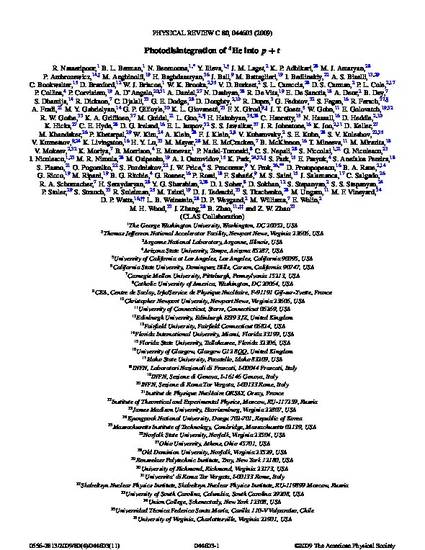
The two-body photodisintegration of 4He into a proton and a triton has been studied using the CEBAF Large-Acceptance Spectrometer (CLAS) at the Thomas Jefferson National Accelerator Facility. Real photons produced with the Hall-B bremsstrahlung-tagging system in the energy range from 0.35 to 1.55 GeV were incident on a liquid 4He target. This is the first measurement of the photodisintegration of 4He above 0.4 GeV. The differential cross sections for the γ4He→pt reaction were measured as a function of photon-beam energy and proton-scattering angle and are compared with the latest model calculations by J.-M. Laget. At 0.6-1.2 GeV, our data are in good agreement only with the calculations that include three-body mechanisms, thus confirming their importance. These results reinforce the conclusion of our previous study of the three-body breakup of 3He that demonstrated the great importance of three-body mechanisms in the energy region 0.5-0.8 GeV.
Available at: http://works.bepress.com/angela_biselli/95/
